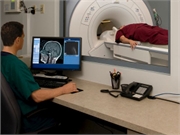Estimates show 30 percent or more of imaging exams across United States and Canada unnecessary
WEDNESDAY, Nov. 13, 2019 (HealthDay News) — Despite initiatives to reduce the use of medical imaging, rates continue to rise in both the United States and Ontario, Canada, according to a study recently published in the Journal of the American Medical Association.
Rebecca Smith-Bindman, M.D., of the University of California in San Francisco, and colleagues performed a retrospective cohort study of 16 million to 21 million patients enrolled in seven U.S. integrated and mixed-model insurance health care systems and individuals receiving care in Ontario, Canada, between 2000 and 2016. The study included 135,774,523 imaging exams, with 5,439,874 (4 percent) of the exams involving children younger than 18 years of age; 89,635,312 (66 percent) involving adults ages 18 to 64 years; and 40,699,346 (30 percent) involving adults aged 65 years and older.
The researchers discovered higher 2016 imaging rates compared with 2000 for all modalities (other than nuclear medicine). In the United States, computed tomography (CT) rates were 428 per 1,000 person-years in 2016 and 204 per 1,000 in 2000. In Ontario, the corresponding CT rates were 409 and 161 per 1,000 person-years. Magnetic resonance imaging rates increased from 62 to 139 per 1,000 person-years in the United States and from 13 to 89 per 1,000 in Ontario. Ultrasound rates increased from 324 to 495 per 1,000 person-years in the United States and from 332 to 580 per 1,000 Ontario. In children, the rates continued to increase with the exception of CT, which stabilized or declined in more recent periods in both the United States and Ontario.
“Although guidelines have been developed for imaging, they are primarily based on expert opinion rather than evidence and have not been shown to reduce imaging,” the authors write. “Whether the observed imaging utilization was appropriate or was associated with improved patient outcomes is unknown.”
One author disclosed previous advisory board membership for Hologic.
Copyright © 2019 HealthDay. All rights reserved.








